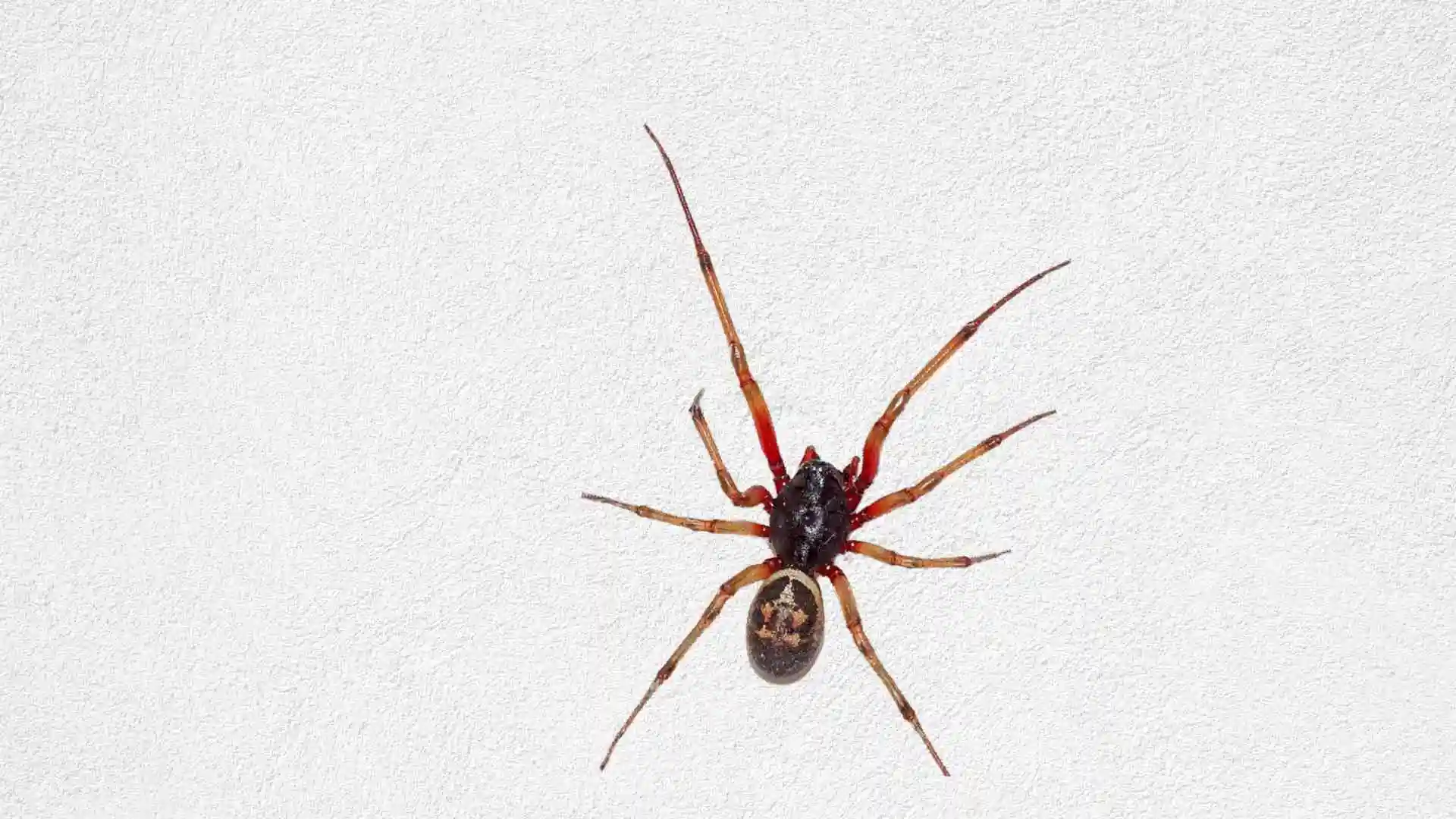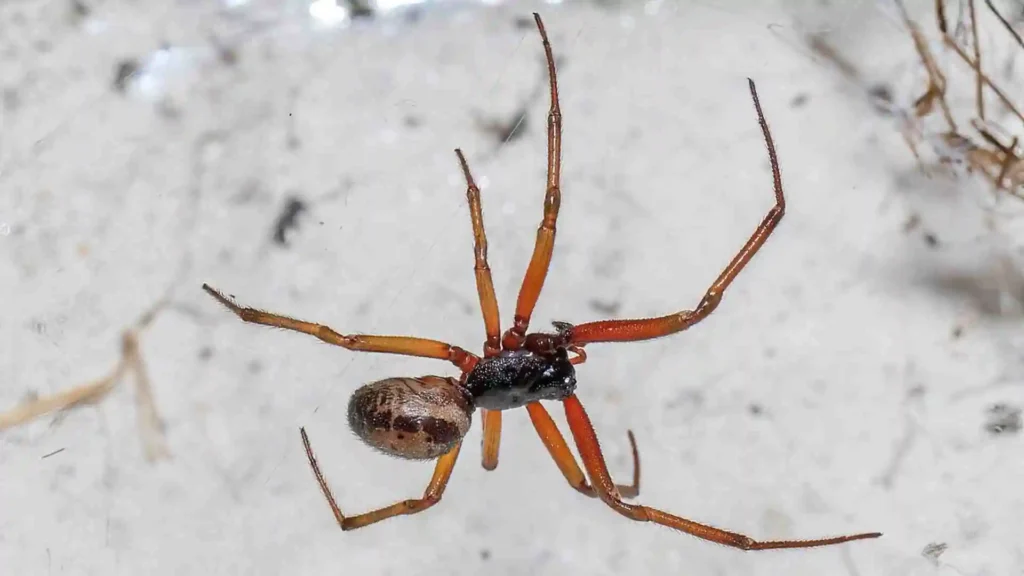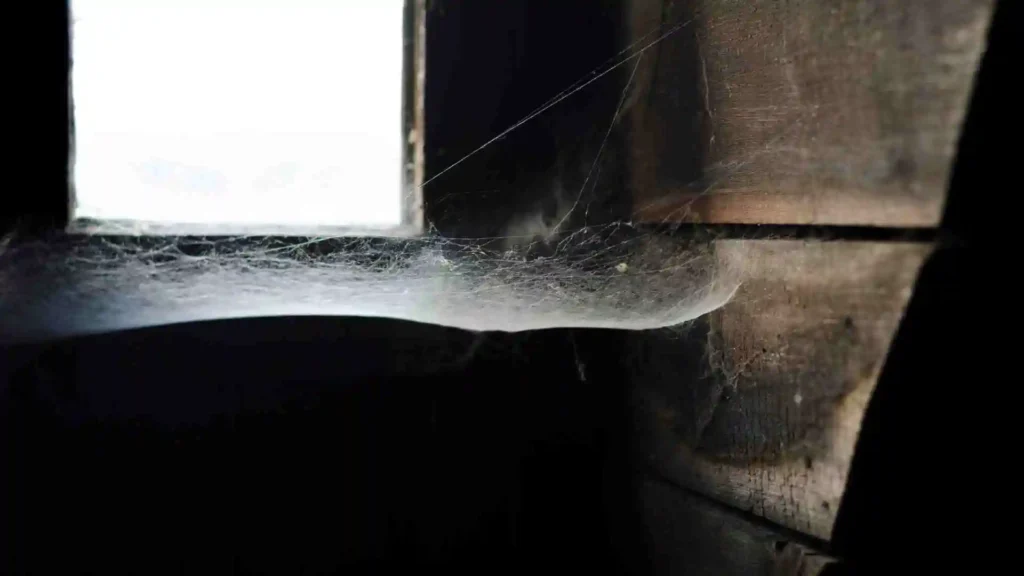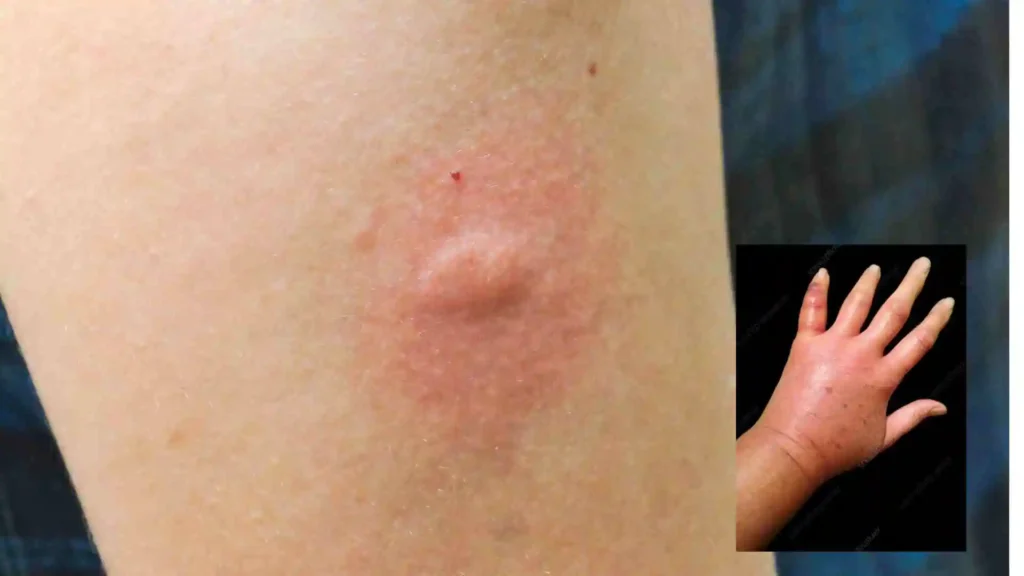Guide to False Widow Spiders in Ireland: Identification & Safety Tips

The false widow spider, also known as Steatoda nobilis or noble false widow, is a distinctive feature in Ireland. It is also known as cupboard spider in Ireland. The native environment for the false widow is the Madeira and the Canary Islands. It was first identified in Ireland in the late 1800s, very likely through merchant shipping. The population began to grow dramatically in urban areas of Ireland since 1990’s.
The public’s perception of this spider is often affected by sensationalism by the media and misunderstanding. It leads to disproportionate fear. Females generally only bite when provoked, and even then, they’re mostly harmless with minor symptoms. However, noble false widows are an invasive species Ireland, and contribute to ecological damage.
This article aims to provide accurate information for the purpose of identifying, risk assessing, and coexisting with the false widow spider in Ireland.
Spider Identification Ireland
Accurate identification is crucial for understanding and managing the presence of a noble false widow.
Noble False Widow (Steatoda nobilis)
- Length: Females are typically 9–14 mm, while males are typically from 7-11 mm
- Colour: Dark brown to black with white skull-like patterns on the abdomen
- Legs: Reddish-orange
- Body Shape: Bulbous and shiny abdomen
Cupboard Spider (Steatoda grossa)
- Size: Smaller, ranging from 6–10 mm.
- Colouration: Purplish-brown with faint triangular markings on the abdomen.

Common Misidentifications
Size: Smaller, generally 6-10 mm.
Colouration: Purplish-brown colouring, with faint triangular markings on the body.
The other spiders commonly confused with false widows are the missing sector orb weaver and lace-webbed spider, both of which are harmless and lack the bulbous abdomen seen with noble false widows. Note. Unlike true black widow spiders, Steatoda nobilis doesn’t have the red hourglass mark.
Habitat and Behaviour
Learning the habitat preferences and behaviour of cupboard spiders can help to manage their encounters.
Preferred Habitats
- Indoors- Found in homes, shed, attic, or corners with height.
- Outdoors- Found under furniture or in a cluttered garden.

Behavioural Traits
- Webs- Build irregular, messy silk webs.
- Hunting: Use the “attack wrap” behavior to subdue prey.
- Diet- Substantial diet consisting of insects like flies and woodlice, but they can also consume small vertebrates like lizards and bats. Which are sometimes observed during wild camping in Ireland.
- Activity- Continue to be active year round in varied temperatures,regardless of the season in Irland when trying to predict spider activity.
Health Implications–Bites and Medical Response
Although the cupboard spider is venomous, its bites can usually be considered harmless to humans.
Venom Potency
The venom contains relatively small amounts of latrotoxins, similar to those of black widow spiders, but much less potent. Most bites result in mild reactions. Severe reactions are rare and linked to secondary bacterial infections.
Spider Bite Symptoms
- Localised Effects: Pain, redness and swelling which develop 1-24 hours after a bite.
- Systemic Symptoms: Nausea, tremors or fever, are reported in 5% or less of cases.

First Aid & Medical Advice
- Immediate Care: Wash the area of the bite with soap and water, cold compress, and elevate the affected limb.
- Medical Attention: Seek professional medical advice if symptoms do not resolve or lose signs of infection.
Preventative Measures: Keeping Homes Spider-Free
Spider prevention tips that serve as environmentally-friendly, humane solutions are similar to methods used when learning how to get rid of silverfish in homes.
Exclusion Techniques
- Seal Entry Point Cracks/Crevices: Repair cracks and crevices around the walls, doors and windows.
- Screens: Install a sturdy screen in doorways and windows to help prevent entry.
- Reduce Clutter: Declutter indoor and outdoor spaces to reduce the number of hiding spots.
- Firewood Management: Store firewood away from the house to deter nesting and spider housing.
Natural Deterrents
- Essential Oils: Spray areas with peppermint oil or vinegar base solutions.
- Regular Cleaning: Vacuum often to pick up webs and food and/or prey.
Professional Pest Control
If you have persistent problems, you may want to reach out to professional pest control services. They can safely and humanely remove them. You should avoid killing.

Personal Accounts–Encounters in Ireland
Home Infestations
Resident reports from around Ireland show cupboard spiders often observed in attics, garages and bathrooms reported in people’s homes, where they are generally found with webs and, in some instances, egg sacs.
Bite Experiences
Most people describe the bite as akin to a wasp sting, and symptoms will eventually subside over days. Serious reactions to the bite are rare and generally associated with allergy or infection.
Ecological Impact–A Growing Threat
The invasion of cupboard spiders creates ecological issues that go beyond human health.
Predation on Native Species
cupboard spiders consume a variety of native species, including legally protected bat and pygmy shrew species, putting them at ecological risk.
Invasive Traits
- Reproduction: Female false widows can produce up to 200 eggs per sac per month.
- Adaptability: Display cold tolerance and adapt to urban environments.
Ecosystem Risks
Their predation on pollinators and small vertebrates could disrupt food chains and reduce biodiversity.
Myth-Busting: Clarifying Misconceptions
All False Widows Are Deadly
Because of fear, cupboard spider bites are often overstated. To date, no deaths have been recorded from false widow bites. Most bites cause mild symptoms that resolve without medical attention.
Aggressive Toward Humans
False widows are not badly aggressive. They typically bite when under threat, for example when trapped inside clothing.
Eradication Is Necessary
It’s not ecologically sound (or practical) to eradicate cupboard spiders. They have an important ecological role in controlling pest populations; the emphasis should be on prevention and keeping spiders as cohabitants.
Conclusion
The cupboard spider is being widely spotted in Ireland, however, is still largely mis-understood. Its bite may cause some irritation, and in rare cases a severe reaction may occur. But generally, it is a secondary problem rather than a direct response from the spider (again, external infections or allergy). However, what is most concerning about false widow sightings is the ecological impact related to it attacking native species. What we should focus on is not spreading more fear with misinformation, but educating ourselves, teaching everyone to identify them correctly, and putting measures in place to prevent encounters. We are unlikely to eradicate them (and don’t need to), but taking a balanced approach that highlights coexistence and monitoring, would be the best way forward.
FAQs
LATEST NEWS
DISCOVER MORE






